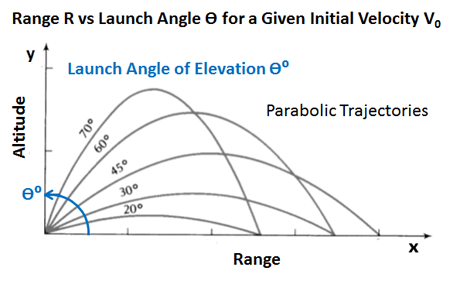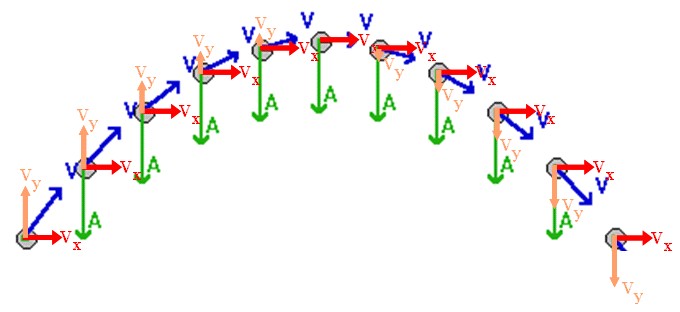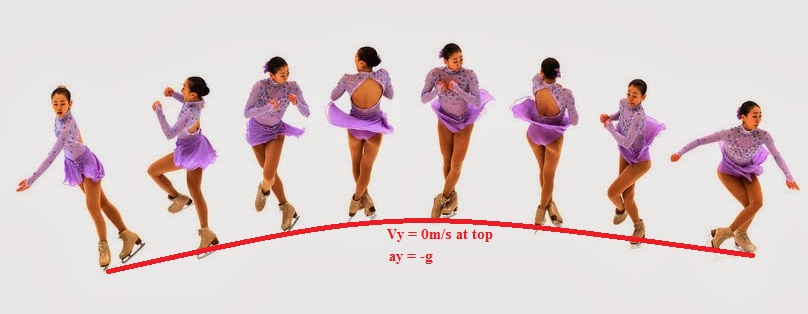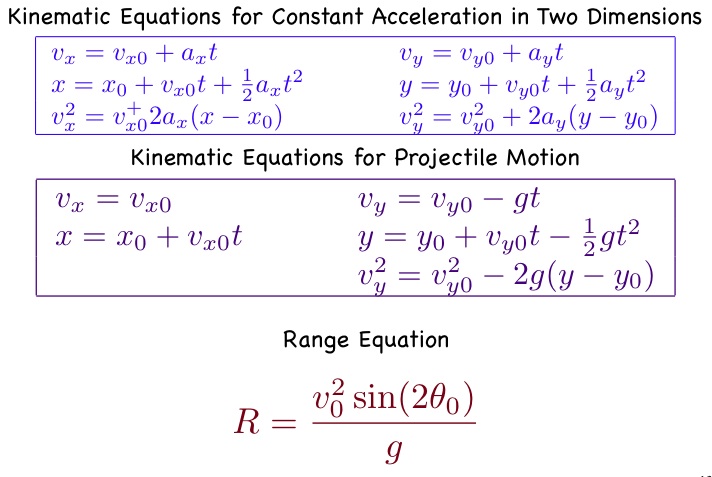Parabolic Trajectory path

As
was discussed previously, projectile motion in two dimensions
will follow a parabolic trajectory path. This is precisely the
path that a figure skaters body takes as they launch themselves
through the air to execute a flawless jump, such as an axel or
double flip. The start of projectile motion, or in this case,
the start of a figure skaters jump will be called the launch.
The angle θ above
the horizontal x coordinate is called the launch angle.
Throughout the jump, gravity acts downward on the skater so her
vertical acceleration will be –g of free fall. In contrast, her
horizontal acceleration will be zero. In terms of velocity, her
vertical component of velocity will be constantly decreasing
throughout the jump. If her vertical velocity is constantly
decreasing, it is constantly changing and is thus the exact
definition of acceleration (change in velocity over time). Her
horizontal component of velocity will be constant throughout the
jump because there is no acceleration in the x direction. To sum
things up, during a jump, a figure skater will experience
uniform motion at a constant velocity in the horizontal
direction and in the vertical direction she will experience free
fall motion.
Parabolic Trajectory path

Projectile Motion diagram showing both the horizontal Vx and
vertical Vy velocity vectors as well as the vertical
acceleration vectors

The
skaters projectile motion below, follows the same exact curve as
the one illustrated above

If we felt like getting more in depth...
We could actually calculate different components of a figure
skaters projectile motion throughout a jump. By using the
following equations of linear motion and projectile motion we
could estimate how far he or she traveled in the x direction. We
would simply need a little information, such as an initial x
position, initial time, initial velocity and a launch angle. These
equations would probably be the most helpful in calculating a
figure skaters maximum height achieved during the projectile
motion. This type of information would be really helpful for a
skater that was struggling with completing the necessary rotations
needed for his or her jump. Skaters frequently lose point for half
completed rotations.
